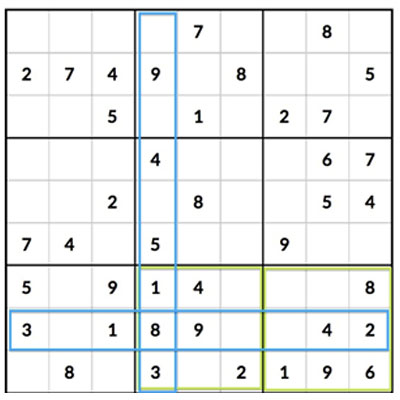
The experimental results indicate that our models can solve all benchmarks. Two proposed models with the best configurations are tested on 57 well-known Sudoku benchmarks. In both models, the neighborhood structures are implemented by using different local search improvement strategies. Local search is performed by a novel mutation-based neighborhood structure. The Filtered-VNS, which is the second model, uses filtering to reduce the number of partial infeasible solutions in the search area. For the first model (Unfiltered-VNS), four neighborhood structures are proposed. In this paper, two novel models based on the Variable Neighborhood Search (VNS) algorithm are proposed to solve Sudoku puzzles. A critical appraisal of the observed behavior of GA is presented in this paper, covering combinations of two mutations and three crossovers schemes. On a positive note, GA was able to solve the Sudoku problems much faster, only the Sudoku had very few unfilled elements. The findings reveal that GA is ineffective to deal with the Sudoku problem, as compared to other classical algorithms, as it often fails to disengage itself from some local optimum condition. A comparative study on the performance of GA with these schemes was conducted involving Sudoku. The investigation includes various mutations and crossover schemes to unravel the Sudoku problem. This paper presents a study on the capability of the Genetic Algorithm (GA) to solve the classical Sudoku problem. Genetic Algorithm (GA), one of the instances of EAs, has potential research avenues of testing its applicability in real-world problems and improving its performance. The T pattern can help you find numbers in other parts of the puzzle.Prospective optimization tools such as Evolutionary Algorithms (EAs), are widely used to tackle optimization problems in the real world. The L pattern helps you find twins and triplets. You can find twins and ghost numbers when this pattern exists. Conditions must be right but quite often they are. When conditions are right the gate pattern can help pinpoint where numbers go.
#Solving sudoku puzzles plus#
The right angle pattern is related to the diagonal and corner patterns.įind an opposite pattern and you may have found a plus pattern.

The diagonal pattern helps you first find twins then other numbers. The corner pattern can help you find twins. Hidden patterns are described on their own page. It is suggested that you learn about patterns before reading about hidden patterns. Hidden patterns are very helpful because they will help you find numbers that are much more subtle. Hard and expert level puzzles may not have patterns at the start but as you add numbers you will start to see patterns emerging. Easy and medium puzzles will have more patterns at the start. Patterns can help with solving puzzles at all skill levels. But knowing patterns will help you see them quicker. If you study an area of a puzzle for a while you will probably see the numbers without recognizing specific patterns. Patterns will help you speed up your analysis of a puzzle and will help you find numbers. When you are familiar with and see specific patterns you will be able to analyze the area of the puzzle very quickly. Patterns help you organize the remaining numbers and eliminate possibilities in a box, and in related boxes, rows and columns.
#Solving sudoku puzzles series#
Patterns are essentially a series of completed numbers (either givens or numbers that have been filled in) in a specific order in one of the boxes on the sudoku grid. They could be listed on the techniques page but since there are many patterns they are listed in their own section.

Patterns are similar to techniques they are another "tool" in your toolbelt. Using patterns is another way to help you solve sudoku puzzles. Patterns are numbers in boxes organized in specific ways that can help find other numbers

If Sudoku Primer and the YouTube channel have helped you, consider donating a little


 0 kommentar(er)
0 kommentar(er)
